How kids are saving lives
qwert
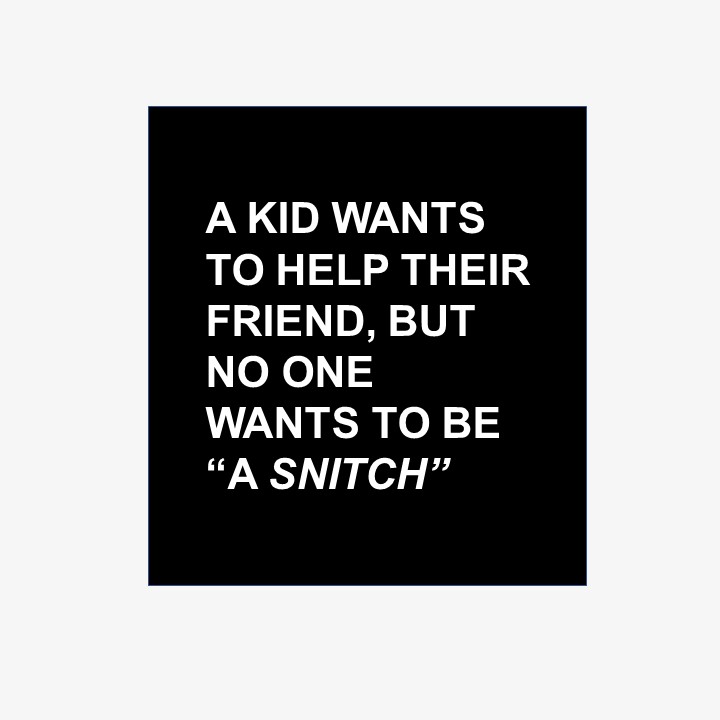
How often does an attacker’s classmate say, “I KNEW it would be them” to a news reporter after another violent incident at a school? Kids often know about a safety concern before adults do. A report by the U.S. Secret Service and Homeland Security, Mass Attacks in Public Spaces (2020), states that two-thirds of the attackers that year had exhibited behavior which elicited concern in family members, friends, neighbors, classmates, co-workers, and others, and in many cases, those individuals feared for the safety of themselves or others. 43% of the attackers threatened someone and 22% made threats against their target.
Active shooters are just one of many current threats schools face. Reports each year include student suicide, bullying, drug abuse, planned school attacks, mental health concerns, dating and domestic violence, child abuse, and more. During the 2017–18 school year, the National Center for Education Statistics, U.S. Department of Education, and Department of Justice found that 80% of public schools recorded that one or more incidents of violence, theft, or other crimes had taken place, amounting to 1.4 million incidents. 47% of schools reported one or more incidents to the police, amounting to 422,800 incidents. Some may assume that incidents of violence only happen in overcrowded and underfunded city schools. The reality is that they have occurred regardless of whether it was a city, suburban, or rural school. There is not a specific profile of the type of school impacted by targeted violence; they varied in size, location, and teacher-to-student ratio. All schools are at risk.
Violence Prevention is Possible.
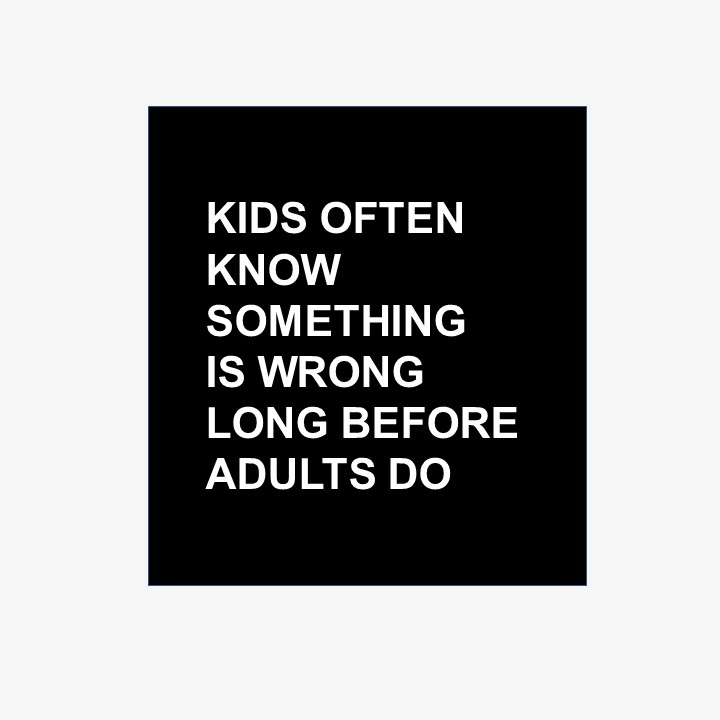
An analysis of targeted school violence indicates that targeted school violence is preventable, and prevention is key. But data is numbers which tell only half of the lesson school communities need to learn. The other side of the story is the personal one. Families, teachers, and administrators want students to be safe; it’s easy to feel upset if someone at school or home knew there was a safety concern and didn’t report it. It’s important to ask that personal question objectively and without blame: “Why didn’t they speak up to stop another incident from happening?” This question should be at the forefront to advance school safety and resilience.
Prevention is a team effort. It is not only a national best-practice, but an Illinois State legal requirement for every school district to establish a behavioral threat assessment team. This multidisciplinary team convenes to identify, evaluate, and address threats or potential threats to school security. However, it can only be prevented if the right people are notified.
The team needs to have multiple ways to receive tips for assessment. Two questions should be asked by the school community: “what stops someone from speaking up when they see concerning behavior?” and “how we can eliminate that barrier?”
One Issue is Communication. Eliminate the Barrier to Speak Up.
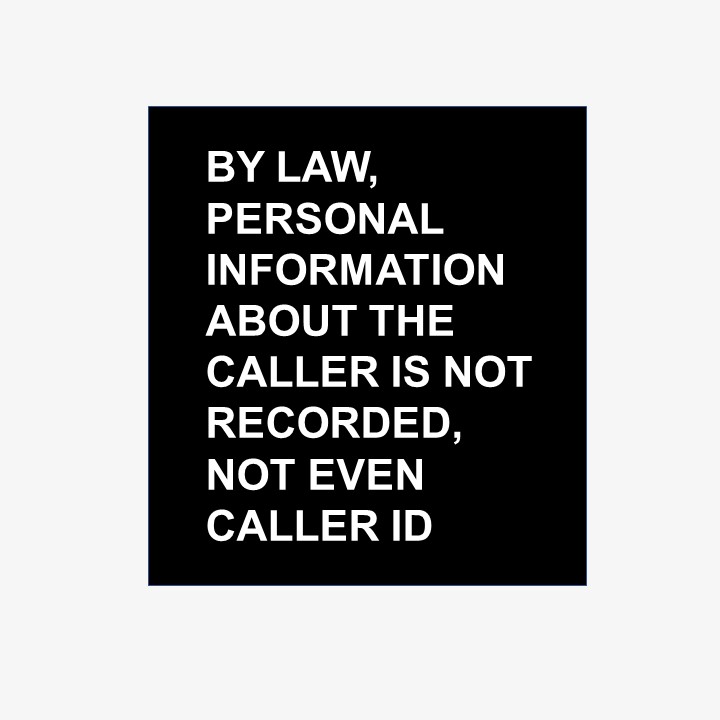
When a student speaks to a teacher or family member, sends a text, or makes a phone call: all of these leave a trail. There may be hesitation in sharing information about a peer for fear of stigmatization or retaliation – some may feel they don’t want to “make a big deal out of nothing.” Whether or not a safety concern about someone is correct, the person sharing information may feel vulnerable that others would discover who made the report, including the identified person showing concerning behavior. One of the steps in the prevention of school-based violence is providing students the option for anonymous reporting.
In a guidance document of how the threat assessment model prevents targeted school violence, the U.S. Department of Homeland Security recognized that, “there should be an option for passing information anonymously, as students are more likely to report concerning or threatening information when they can do so without fear of retribution for coming forward.
No one wants to be seen as a snitch. That’s why it’s important for anyone in Illinois to be able to confidentially share information about a safety or security concern if they believe harm is going to occur. With the Student Confidential Reporting Act set in place, information about the person reporting may not be shared (with few privacy exceptions). When there aren’t perceived consequences to communicating an honest safety concern about a classmate, early intervention is more likely to occur, and that student is more likely to get help they need.
Keep it Simple. Use What Works.
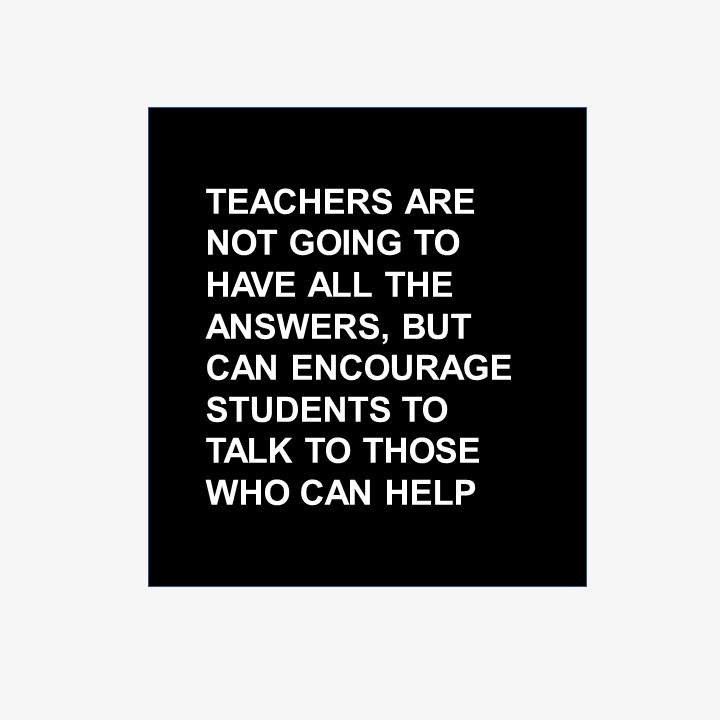
If parents or guardians prefer their student to share a safety concern with them, do they have the training necessary to manage a potential safety or security threat? For example, if a child tells a parent about a threat they overheard, or that a friend is talking about harming themselves, a parent may ask themself:
• As a parent, do I know what to do?
• Am I able to distinguish between a joke and a serious cry for help?
• Should I notify a teacher, the principal, or the police?
• If I tell someone, will I lose the trust of my child? If others discover they confided in me, would that put them in danger to bullying or worse?
• Do I know what resources are available in the community to help the student?
• If I get involved, will it make the situation for the student or for the school worse?
Death by suicide is the second leading death among 10-24 year old youth. How would that change if students had more of an opportunity to speak up about their own and their classmates’ depression, bullying, or negative home life factors like divorce or domestic abuse? Would kids in Illinois be more likely to get help in managing the issues they are dealing with? Illinois is introducing a new statewide program used in other states. The program is intended to build on existing programs like the threat assessment team, to get kids the help they need, fast.
The Illinois Terrorism Task Force School Safety Working Group identified the need for a centralized digital anonymous tip line for school threats at the state-level as it would be more cost effective and efficient to monitor tips. The group recommended a statewide Student School Safety Tip Line to lawmakers, which currently exists in other states.
How it Works & When it Worked.
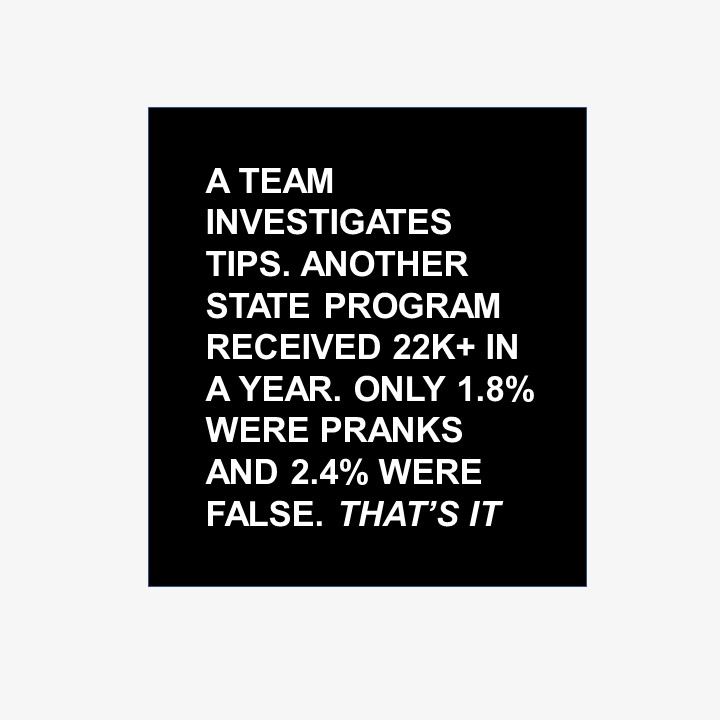
Confidential reports are received 24/7/365 by Safe2Help Illinois operators. But training is necessary for any program to be effective. Call takers receive instruction on how to interact best with students, through a training program which focuses on crisis management, local community referrals and resources, what information to record, and when tips should be shared with schools and law enforcement.
Not all kids and teens are comfortable with interacting with police, so may be easier for them to reach out anonymously when they understand that the person answering the call is not a member of law enforcement.
A team is required to investigate and assess reported tips. When action is needed because there’s evidence that a threat is real or imminent, the process is to immediately forward that information to local school officials and/or law enforcement. School districts are already required to have threat assessment teams and protocols to support students. Safe2Help Illinois supports and supplements the teams.
Some examples of success stories provided in a similar program include:
• A sex-offender is arrested when a 14 year old shares disturbing messages on social media.
• A concerned friend reports that a young man is cutting while threatening suicide.
• School officials prevent a knife fight after a caller reported details of the planned event.
• Concerns of inappropriate contact between a teacher and students leads to an investigation and dismissal of the teacher.
• A caller reports severe bullying of a 9 year old leading to the bully being charged and convicted.
More Information is Needed.

While it’s fortunate that other similar campaigns have been tested in the last few years, and annual progress reports have been required by the states who have adopted the program, it’s not guaranteed that Safe2Help Illinois will be accepted and adopted locally. Additional research, planning, and investment is still needed.
A few questions remain, such as:
• How is it verified that protocols will be followed and confirmation that school districts will follow up on tips shared? Who is responsible at the school?
• What is the definition of “success” and “failure”? How is it measured for this program?
• How will school closures or continuity of learning affect the program during disruptive events like severe weather or a pandemic?
• How is support provided if local community resources are limited?
• Do schools have the capability to respond to tips, or could they be overwhelmed? Will school districts in communities that have more economic insecurity receive more resource investment?
The following considerations provide opportunities for application, ideas to gain buy-in, and where to find more information, so that families/guardians and school employees can be informed enough to decide whether to support it. What’s offered below is a starting point, not as a complete or required list of tasks.
FAMILIES AND GUARDIANS
Raise a leader.
The home life and discussions with students will be directly reflected in the culture and climate at school. The influence that families and guardians have on students cannot be understated. Students may need to be reminded that school safety and security is a shared responsibility that requires their input to be effective. Activities for ideas to better engage students, allowing them to be a leader in safety and security, are listed below. Families and guardians, consider the following:
• Make it personal. Talk to your kid and be honest, sharing stories about challenges you experienced at their age. Allow them the opportunity to talk with you about anything.
• Listen, and ask if they want your opinion before sharing your opinion.
• Remind them that if they know something which could be dangerous, they should tell a trusted person to help. What they know matters, and no one else needs to know who spoke up. They shouldn’t assume the school knows, or that a problem will go away on it’s own.
• Remind your student that prank calls are not acceptable.
• Reassure kids that police won’t be answering the phone when a student calls. Trying to handle a concern on their own could cause more issues they hadn’t thought about.
• Be sure to end the conversation positively.
Check it out together:
• Look over the website together with your student. Ask if they find the advice given helpful. Provide website feedback on your different perspectives.
• Discuss the pros and cons, and potential value with other families. Post discussions online (such as on Facebook groups, Twitter, Instagram, or neighborhood communities like Nextdoor) or bring it up in-person (best option!).
• Have your student save the phone number to Safe2Help in their cellphone if they have one. It is: 844-4-SAFEIL or text: 844-472-3345. If they don’t have one, write the phone number and website on the inside cover of a notebook, post it on the fridge, or mark it on a student’s backpack tag.
TEACHERS AND SCHOOL STAFF
Students engaged in safety = student success.
Class instruction is designed to embolden students to think critically and critique products, services, and the status quo. Activities for ideas to better engage students, allowing them the opportunity to be a leader in school safety and security:
• At the beginning and mid-year, and just before final exams, discuss the need for students to report concerns. Ask the class why notifying the right people about potential safety threats is important, or why it isn’t. Poll whether there is class agreement or disagreement on who the “right” person to talk to about a concern should be.
• Display a few webpages on safe2helpil.com, such as Bullying or Helping a Friend at Risk of Suicide.
• As homework (or extra credit), have students to spend 5 minutes browsing the website, then share one new thing they learned with the class tomorrow. Extra credit is offered to students who provide constructive criticism on the website or social media, and forward the reply to the teacher.
• Give the phone number to students so they can immediately save it in their cellphone or write the number on the inside cover of a notebook if they don’t have a cellphone. It is: 844-4-SAFEIL or text: 844-472-3345.
• Reassure students that when they contact Safe2Help, police aren’t answering phone calls, trained personnel are. Police are only notified afterwards to prevent a tragedy from taking place.
In-Class Activity:
Show students exactly what to expect when they call. Place your phone on speakerphone mode and call Safe2Help:
• Say, “This is a test. I’m showing my class how Safe2Help works so they feel more comfortable using it”
• Ask, “What questions do you ask a caller?” or “What issues or concerns do students often call about?”
• Offer to your class, “What question do you have for the operator?” but limit to 3 questions.
ADMINISTRATORS
Build safe spaces.
School districts can reflect and discuss how to adopt and how to adapt the program to their specific school so that families/guardians are proponents to endorse it within their social groups, and student influencers act as both authorities and early adopters. Activities for ideas are listed below.
As school administrators, be prepared:
• Reach out to ensure a point-of-contact is made with Safe2Help Illinois to answer questions via phone call or email, recommend resources schools can use, provide administrators with notification about an update or change, or to help troubleshoot an unexpected challenge.
• Connect directly with other districts/schools on what they are planning to do. If they have great marketing material or a presentation they are willing to share, request it and adapt or scale it to your own. There’s no need to “reinvent the wheel” if another school has great content.
• Work with Safe2Help Illinois to create a short 15-30 minute overview and Question and Answer session about the campaign before school begins. The presentation for families can be added to an existing school-wide or district-wide webinar or assembly, or as a stand-alone training.
• Present Safe2Help Illinois with teachers and staff in a training prior to the start of school. Any discussion or presentation should be very brief and allow for questions.
Keep a toolkit of resources:
• Request employees and guardians store the number in their cellphone to share it with their students.
• Use multiple and creative ways to promote the campaign and get others involved.
Share marketing flyers, stickers, and videos with all teachers and staff, and to give to students. Be sure to include giveaways to librarians, art and PE teachers, and custodians.
• Share materials with community groups, such as Girl Scouts, basketball coaches, and at locations in the community where kids hang out (e.g., movie theatres, skate parks).
• Add stickers to student IDs, planners, and notebooks with Safe2Help contact information. Post flyers throughout the school, including on bathroom mirrors and stall doors, and in locker rooms.
• Focus group marketing material aimed at students, such as on posters or videos. Ensure a diverse group are involved early on to offer suggestions for what works and what doesn’t.
• Identify student “influencers” who would be willing to showcase their experience using the website or contacting Safe2Help with their followers and peers. Look for those who are well-connected and well-known, tend to create an impact, have active minds, and are trendsetters. Avoid censoring negative feedback.
Be open and honest about it:
• Show transparency about Safe2Help Illinois when discussing it with school employees and with families/guardians.
• Accept that sometimes kids don’t make great choices and just want to have fun. In the 2018-2019 school year, a similar program in another state received more than 22,000 tips. 1.8% were pranks and 2.4% were false.
• If you don’t have the answer to a question, let employees and guardians know you’ll find out and follow up with the response via email or at the next meeting.
• Maintain an open dialogue to encourage idea-sharing.
Be Involved.
A common saying in the emergency management field is that, “you don’t need to have all the answers, you need to know who to turn who does know.” Kids know something is wrong long before adults do. The Safe2Help campaign may give students one way to do something about it, if it’s implemented correctly. Students could make schools safer by reporting concerns to those who can help.